EMI-101 Series Part 4 - RFI/EMI Shield Material Types
Preface | Part 1 | Part 2 | Part 3 | Part 4 | Part 5 | Conclusion
PART 4
There are three main types of E-Field EMI shielding in use today. Each of the below EMI shield material types has its own advantage, so which one will be best for your specific application?
EMI shielding tapes consist of metal foils, metal wire mesh or metal-plated fabrics materials. Tape wraps may or may not have a conductive adhesive backing to aid installation. Tapes are available in Copper or Aluminum foils, knitted Tin-plated copper-wire mesh or metal deposited onto nonmetallic fabrics. Tape is a very versatile product since it can be configured to almost any shape. However, it has many negatives associated with it.
To achieve a good EMI shield on cables, they must be wrapped with a 50% overlap of each wind. Thus, to create a cable shield of any length using tape requires a lot of material. Plus, the process is very craft sensitive and two different installers can create identical shielded cable assemblies that yield different performance levels. Another negative is that metal foil types can be sharp and can potentially cut fingers and wire insulations. They also don’t change direction easily without creating wrinkles that can be very sharp. Wire mesh tapes solve this sharp kinking problem, but as to avoid repeating, they are made from a kitted wire mesh. Wire mesh tapes do not provide as high a level of high-frequency shielding due to having a lot of open space. The newer metal-plated fabric tapes provide excellent EMI shield coverage because they have extremely tight weaves and little open space. These tapes typically have very high shield coverage (98% +) and perform very close to the level of the metal foil tapes, which create a solid metal wall against interference signals.
Tapes serve a purpose and are ideal for short run lengths and for transition breakouts that require many directional changes. Used in limited applications, EMI tapes are an important component every EMI engineer should have in his or her toolbox. Just be aware of the handling negatives and production line limitations of these types of materials.
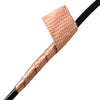
|
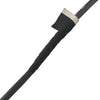 |
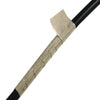 |
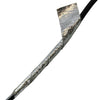 |
Solid metal conduits provide excellent E-field EMI shielding characteristics over wires and cables. Unfortunately, they generally have a large volume footprint (take up a lot of space), are rigid and require tubing benders and/or special end fittings to achieve bends. They are also generally bulky and heavy.
Conversely, expandable metal braid materials offer a high degree of flexibility and take up much less volume, but do so at the expense of shielding performance. The woven nature of braids, which make them so desirable from a flexibility standpoint and gives them a degree of expandability, is the result of having a large percentage of open window space. This means that they will not perform well in high-frequency range applications.
Both of these types of possible solutions suffer from a common installation problem. Any continuous tubular product requires the wire and cable to be pulled through the conduit or braid. This means that connectors cannot be preinstalled and tested prior to completing the final harness assembly. Connectors are typically too big to pass through most conduits or expandable sleeves. This makes harness fabrication much more difficult, time consuming and labor intensive. It also makes reworks and/or field modifications very difficult and costly.
- Wrap-Around Tubing
This type of product provides the advantages of a solid conduit or sleeve without the negatives associated with pulling cable through the sleeve or the requirement to have no connectors installed at the time of shield assembly. Wrap-around tubings are a flat, open product when delivered. The installer simply reels off the required length to avoid reposition and cuts it as desired. The finished cable assembly with installed connectors is laid inside and then the two edges are pulled together and a closure feature is zipped closed to create a continuous tube. They perform well in low-medium-and high-frequency applications since the EMI shielding material wraps beyond the zippered split line, providing 360+ degrees of shield coverage.
Since the products are manufactured in a flat, open form, the type of EMI shielding material can be customized to fit the customer’s specific needs. A secondary advantage of a flat, open product is that final closed diameter sizing is essentially infinite. The same materials can be used throughout the system regardless if they are ¼” in diameter or 14 inches in diameter. There are few size limitations with these types of jackets because the product fabrication is not limited to an extrusion die or braider head size limit. EMI shielded versions of this kind of tubing can incorporate Aluminum or Copper foils, various alloys of knitted-wire mesh or various types of metallized fabrics. Multiple material types can be combined within a single jacket if necessary, offering different shield types in various locations of the tubing if the application demands it.
Shielded wrap-around tubing also incorporates an integral grounding braid wire running the full length to allow the user an easy means of ground termination. These types of products are composite in nature and generally have an insulation jacket material on the outside of the EMI shield material, which can be specified to provide dielectric, chemical, mechanical and/or thermal protection. This eliminates the need for the harness fabricator to add secondary protection to the EMI shield, saving both time and labor cost.
Wrap-around jackets also simplify production sequencing and allow the wire harness assemblies to be fully assembled and tested before bundling them into the EMI shield. They also make design changes, reworks and field retrofits easy since most of these tubing designs can be re-entered after initial closing, allowing repeated access and re-closing.
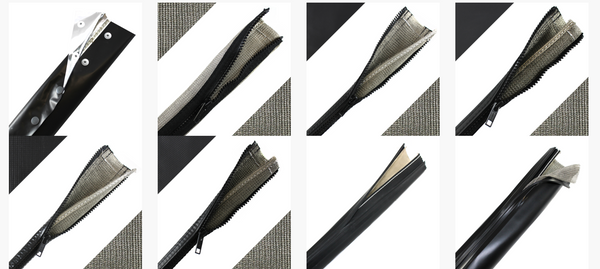

Some customers go so far as to pre-define extended shield ground-wire lengths and terminal hardware so the product can be simply unpackaged, wrapped around the cable assembly, zipped closed and the grounding hardware attached to a grounding stud or chassis fastener.


















